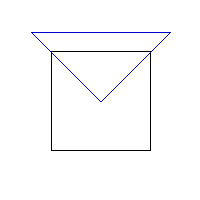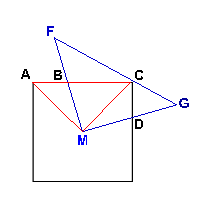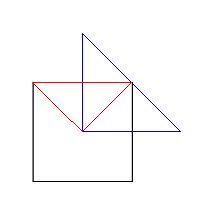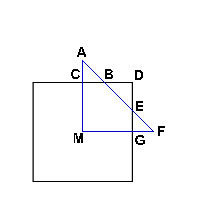Tilting Triangles
Problem
A right-angled isosceles triangle whose two equal sides are 2 units in length is attached at its right-angled vertex to the centre of a square of side 2 units and rotated about this centre point.
What can you say about the area of the part of the square covered by the triangle as it rotates?
What happens to this area if the triangle is reduced in size so that its two equal sides are $ \sqrt 2 $ units?
What happens if the triangle is further reduced in size?
Getting Started
As the triangle rotates compare what part of the square is not covered by it anymore and what part of the square is newly covered.
Does the triangle continue to cover the whole of the portion of the square it moves over as its size reduces. What is special when the triangles side is of length $ \sqrt 2 $ units?
Is there a point where the whole of the triangle is always in the square and what effect does that have?Student Solutions
Some excellent ideas and approaches to this problem. The first part of the problem (when the triangle is larger than the square) is fairly accessible; as is the part where the two equal sides of the triangle shrink to less than half the length of the side of the square but the bit in between is tricky!!
The first solution offered below is based on the work of Thomas Davies, Hannah McKenzie, Elliot Husband, Lizzie Farnham and Hannah Bradley of Madras college The group also spent time looking at what happens as the triangle shrinks (not so easy). Well done to all of you.
The second solution is from Andrei Lazanu of School 205, Bucharest. Thank you for this Andrei
Other excellent solutions were received from Alison Colvin, Sheila Norrie and Shona Leenhouts, also of Madras College, who have partly answered one of the January problems (if you tackle this problem you can refer to what you did for tilting triangles). I think the January version is a little easier.
Solution one
Introduction
We believed that the triangle took up a quarter of the square, and that a total of four triangles could fit around the square. We created a moving example:
Explanation
We started by rotating a square inside the four triangles as this has the same effect as rotatiing the triangle (editors note:I "liked this bit of lateral thinking").
From our "moving" representation (Fig. 1) we could see that it is always possible to fit four right angled triangles around the centre of the square. This is because the centre of the square allows a 360 ° rotation and, as the traingles are right angled, they have angles of 90 ° (360 / 90 = 4).
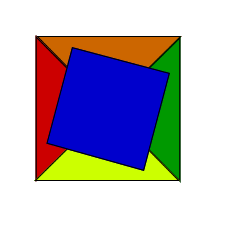
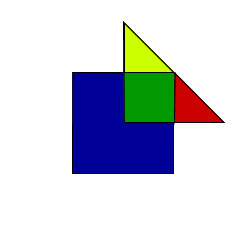
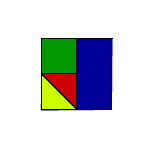
The Bigger Picture
As can be seen the square in the middle of the four triangles is 2 units by 2 units. This means that the overlap of each of the four triangles is congruent and makes up a quarter of the square.
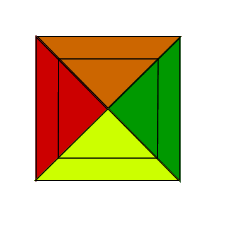
Conclusion
The Second Solution
